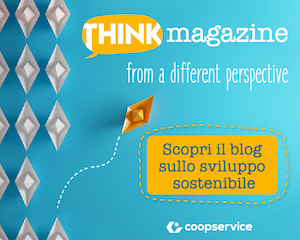La Comunicazione persuasiva: Conclusioni
La Comunicazione persuasiva: Conclusioni
Il presente contributo nasce dall’interesse, teorico e applicativo, verso gli elementi che definiscono la relazione tra la comunicazione persuasiva, la scelta e l’utilizzo delle metafore.
Al fine di verificare il ruolo di questo strumento comunicativo e cognitivo nella comunicazione quotidiana, è parso infatti necessario introdurre nell’analisi del tema un argomento familiare a tutti, qualela noia.
In particolare ci si è focalizzati sugli sviluppi applicativi della stessa nei processi educativi infantili.
Se da un lato si evidenzia come la metafora viene utilizzata in modo coerente con le teorie di Lakoff e Johnson (1980), secondo cui è strumento d’eccellenza nel rendere comprensibile e concreto un concetto astratto, dall’altro si evidenzia come il suo utilizzo e la sua scelta, in alternativa al corrispondente letterario, sono congrui agli schemi cognitivi attivati nelle diverse situazioni comunicazionali in cui un individuo si può ritrovare nel momento in cui interagisce nel contesto sociale in cui vive.
BIBLIOGRAFIA
-
- Allbritton, D. W. (1995). When metaphors function as schemas: Some cognitive effects of conceptual metaphors. Metaphor and Symbol, 10(1), 33-46.
-
- Arendt, H. (1977). Life of the Mind: Thinking, Willing. San Diego: Harcourt.
-
- Asch, S. E. (1958). The metaphor: A psychological inquiry. In R. Tagiuri & L. Petrullo (Eds.), Person perception and interpersonal behaviour, 86 –94. Stanford, CA: Stanford University Press.
-
- Banaji, M. R., Hardin, C., & Rothman, A. J. (1993). Implicit stereotyping in person judgment. Journal of Personality and Social Psychology, 65, 272-281.
-
- Cassirer, E. (1946). Language and Myth. Translated by Susanne Langer, K. New York: Dover Publications.
-
- Davidson, D. (1978). What Metaphors Mean. Critical Inquiry, 5(1), 31–47. Reprinted in Inquiries into Truth and Interpretation, Oxford and New York: Oxford University Press, 1984, 245–264.
-
- Devine, P. G. (1989). Stereotypes and prejudice: Their automatic and controlled components. Journal of Personality and Social Psychology, 56, 5-18.
-
- Dunning, D., & Sherman, D. A. (1997). Stereotypes and tacit inference. Journal of Personality and Social Psychology, 73, 459 – 471.
-
- Eco, U. (2004). Aspetti conoscitivi della metafora in Aristotele.
-
- Fazio, R. H., Jackson, J. R., Dunton, B. C., & Williams, C. J. (1995). Variability in automatic activation as an unobtrusive measure of racial attitudes: A bona fide pipeline? Journal of Personality and Social Psychology, 69, 1013–1027.
-
- Gentner, D., & Wolff, P. (1997). Alignment in the processing of metaphor. Journal of memory and language, 37(3), 331-355.
-
- Gentner, D., Bowdle, B. F., Wolff, P., & Boronat, C. (2001). Metaphor is like analogy. In D. Center, K. J. Holyoak, & B. N. Kokinov (Eds.), The analogical mind: Perspectives from cognitive science, 199 –253. Cambridge MA: MIT Press.
-
- Gibbs, R. (1994). The Poetics of Mind: Figurative Thought, Language and Understanding, Cambridge University Press, Cambridge.
-
- Gibbs, R. W. (2006). Metaphor Interpretation as Embodied Simulation. Mind Language, 21 (3), 434-458.
-
- Hobbes, T. (1651). Leviathan. (ed.) John Plamenatz, London: Collins, 1962.
-
- Jaynes, J. (1986). Consciousness and the voices of the mind. Canadian Psychology, 27 (2), 128–139.
-
- Johnson, M. (1987). The Body in the Mind: The Bodily Basis of Meaning, Imagination, and Reason, University of Chicago, Chicago.
-
- Keefer, L. A., Landau, M. J., Sullivan, D., & Rothschild, Z. K. (2011). Exploring metaphor’s epistemic function: Uncertainty moderates metaphor-consistent priming effects on social perceptions. Journal of Experimental Social Psychology, 47, 657-660.
-
- Kintsch, W. (2000). Metaphor comprehension: A computational theory. Psychonomic Bulletin & Review, 7(2), 257-266.
-
- Kövecses, Z. (2002). Metaphor: A Practical Introduction, Oxford University. Press, New York
-
- Landau, M. J., Meier, B. P., & Keefer, L. A. (2010). A metaphor-enriched social cognition. Psychological bulletin, 136(6), 1045.
-
- Langer, S. K. (1979). Philosophy in a new key. Cambridge, MA: Harvard University Press.
-
- Lakoff, G., & Johnson, M. (1980). Metaphors We Live By, The University of Chicago Press, Chicago. Tr. it. Metafora e vita quotidiana, Bompiani, Milano, 1998.
-
- Lakoff, G., & Turner, M. (1989). More than Cool Reason: A Field Guide to Poetic Metaphor, The University of Chicago Press, Chicago.
-
- Lakoff, G. (1993). The Contemporary Theory of Metaphor, in Ortony (ed) (1993), pp. 202-251.(http://uchcom.botik.ru/IHPCS/MET/WebLibrary/Lakoff/The-Contemporary-Theory-of-Metaphor.html).
-
- Lee, S. W., Schwarz, N., Landau, I. M., Robinson, M. D., & Meier, B. P. Metaphor in judgment and decision making. Metaphorical thought in social life. Washington, DC: American Psychological Association.
-
- Locke, J. (1689). An Essay Concerning Human Understanding. P.H. Nidditch (ed.). Oxford: Oxford UP.
-
- Locke, J. (1997). Essays on the Law of Nature. in Locke: Political Writings, ed. Mark Goldie, Cambridge: CUP.
-
- Lord, C. G, Ross, L., & Lepper, M. R. (1979). Biased Assimilation and Attitude Polarization: The Effects of Prior Theories on Subsequently Considered Evidence. Journal of Personality and Social Psychology, 37(11), 2098-2109.
-
- Maass, A., Suitner, C., Arcuri, L. The role of metaphors in intergroup relations. In Mark J. Landau, Michael D. Robinson, and Brian P. Meier, Metaphorical Thought in Social Life, chapter7.
-
- Meier, B. P., & Robinson, M. D. (2004). Why the sunny side is up: Associations between affect and vertical position. Psychological Science, 15(4), 243-247.
-
- Nùñez, R. E., & Sweetser, E. (2006). With the future behind them: Convergent evidence from Aymara language and gesture in the crosslinguistic comparison of spatial construals of time. Cognitive Science, 30, 401– 450.
-
- Palmonari A., & Emiliani F. (2009). Paradigmi delle rappresentazioni sociali. Il Mulino, Bologna.
-
- Radden, G., Kövecses, Z. (1999). Towards a theory of metonymy, in Panther e Radden (eds.) (1999), pp. 17-59.
-
- Rorty, R. (1989). Contingency, Irony, and Solidarity, Cambridge: Cambridge University Press.
-
- Searle, J. R. (1979). Metaphor. In: A. Ortony (ed.), Metaphor and Thought. Cambridge: C.U.P., 92-123.
-
- Thibodeau P. H., & Boroditsky, L. (2011). Metaphors We Think With: The Role of Metaphor in Reasoning. Stanford University, Stanford, California.
-
- Vito, E. (2008). “Personhood, Religion and Cognitive Linguistics”. In: From Applied Linguistics to the Linguistics of the Mind. Issues, Practices and Trends. XXVI Congreso de AESLA (Asociación Española de Lingüística Aplicada) Universidad de Almería, ALMERÍA: Carmen M. Bretones Callejas, José R. Ibáñez Ibáñez, p. 203, ISBN: 978-84-612-2610-8.
-
- Vito, E. (2008). La metafora come carrefour cognitivo del pensiero e del linguaggio. In Casadio, Claudia (ed.) (2008). Vie della metafora: linguistica, filosofia, psicologia. Chieti: Editore Prime Vie – Sulmona. pp. 55-80
-
- Williams, L. E., & Bargh, J. A. (2008). Experiencing physical warmth promotes interpersonal warmth. Science, 322, 606-607
© Metaforicamente parlando. Il ruolo della metafora nella comunicazione persuasiva – Alice Spollon







